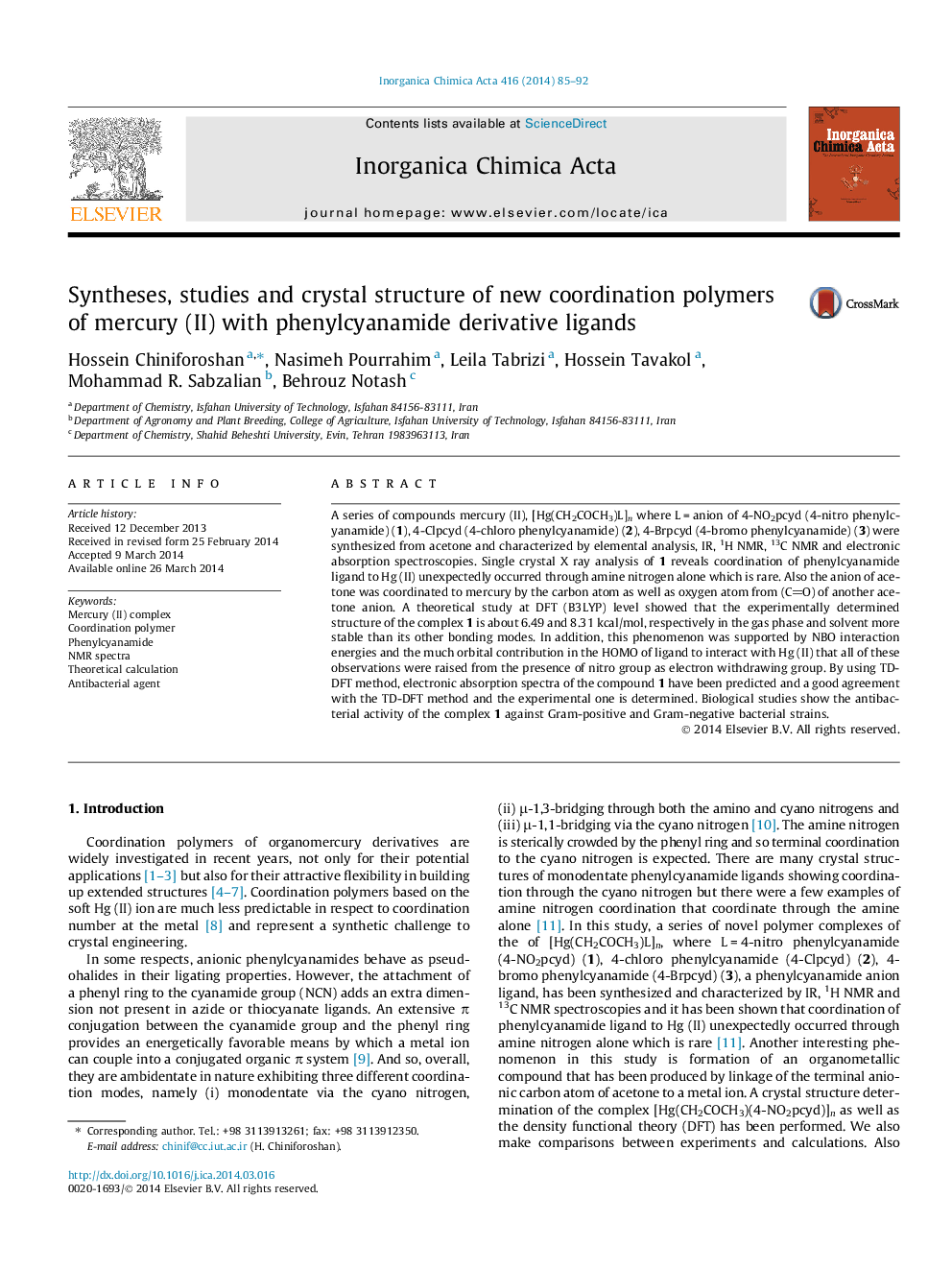| کد مقاله | کد نشریه | سال انتشار | مقاله انگلیسی | نسخه تمام متن |
|---|---|---|---|---|
| 1309956 | 1499172 | 2014 | 8 صفحه PDF | دانلود رایگان |

• New mercury (II) polymers with phenylcyanamide ligand were prepared and characterized.
• The single crystal X-ray analysis reveals phenylcyanamide ligand is coordinated to Hg (II) through an amine nitrogen.
• As shown by DFT calculations, the experimentally determined structure is more stable than other bonding modes.
• The compounds show antibacterial activities against Gram-negative and -positive bacteria.
A series of compounds mercury (II), [Hg(CH2COCH3)L]n where L = anion of 4-NO2pcyd (4-nitro phenylcyanamide) (1), 4-Clpcyd (4-chloro phenylcyanamide) (2), 4-Brpcyd (4-bromo phenylcyanamide) (3) were synthesized from acetone and characterized by elemental analysis, IR, 1H NMR, 13C NMR and electronic absorption spectroscopies. Single crystal X ray analysis of 1 reveals coordination of phenylcyanamide ligand to Hg (II) unexpectedly occurred through amine nitrogen alone which is rare. Also the anion of acetone was coordinated to mercury by the carbon atom as well as oxygen atom from (CO) of another acetone anion. A theoretical study at DFT (B3LYP) level showed that the experimentally determined structure of the complex 1 is about 6.49 and 8.31 kcal/mol, respectively in the gas phase and solvent more stable than its other bonding modes. In addition, this phenomenon was supported by NBO interaction energies and the much orbital contribution in the HOMO of ligand to interact with Hg (II) that all of these observations were raised from the presence of nitro group as electron withdrawing group. By using TD-DFT method, electronic absorption spectra of the compound 1 have been predicted and a good agreement with the TD-DFT method and the experimental one is determined. Biological studies show the antibacterial activity of the complex 1 against Gram-positive and Gram-negative bacterial strains.
We report syntheses and study a series of mercury (II) compounds with phenylcyanamide derivative ligands which coordinated to Hg (II) through amine nitrogen alone for the first time. Also, theoretical methods and antibacterial activities have been studied.Figure optionsDownload as PowerPoint slide
Journal: Inorganica Chimica Acta - Volume 416, 24 May 2014, Pages 85–92